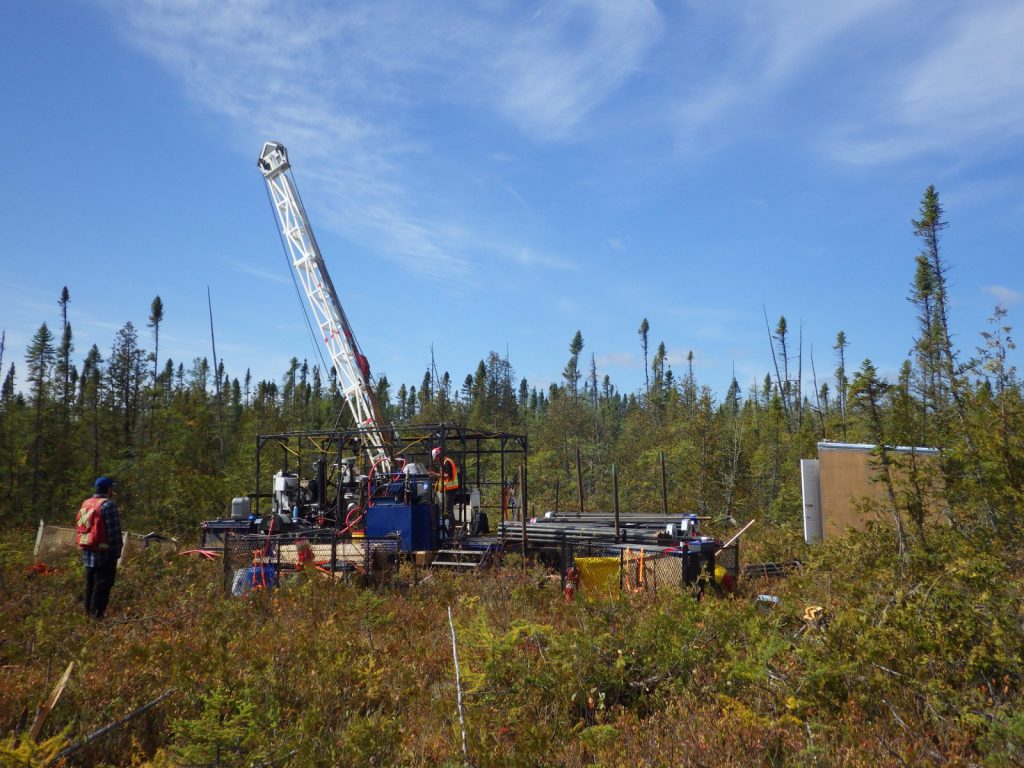VR Resources drills 1.87% TREO over 3 metres at Hecla-Kilmer, Ontario

VR Resources Ltd. [VRR-TSXV; VRRCF-OTCQB; 5VR-FSE] reported the remaining geochemical data from the five-hole drill program completed last fall on its Hecla-Kilmer (H-K) REE (rare earth element) critical metal discovery located in Northern Ontario.
Drill Hole HK22-018 on a north-easterly structure from Hole 13 at Pike Zone returned 2 metres of 3.72% TREO with 33% PMREO, within 5 metres of 1.73% TREO with 21% TREO, above 105 metres of 0.6% TREO with 18% PMREO at the end of the hole, and open to depth.
Drill Hole HK20-001 on a south-easterly structure from Hole 13 at Pike Zone returned 3 metres of 1.87% TREO with 20% PMREO, and 8.0 metres of 1.0% TREO with 19.5% PMREO, and open to depth.
Data have now been received for all five holes completed last November, and from the first hole drilled at Hecla-Kilmer in 2020, HK20-001, for which samples were not submitted at the time.
High-grade vein mineralization with >1% TREO has now been intersected in 16 of the 21 drill holes completed to date in four drill programs at Hecla-Kilmer.
The Pike Zone occurs at the intersection of two major structures that cross the 5 x 7 km complex at H-K.
The REE intersections in Holes 001 and 018 highlight the potential for higher grade vein mineralization along strike of these structures, and;
The continuous mineralization from bedrock surface to 504 metres depth in Hole 13, a vertical hole drilled at the structural intersection, underscores the vertical extent of the REE mineral system.
The new vein mineralization at 3.7% TREO in Hole 018 is along the strike of a northeast-trending structure and magnetic grain that was intersected in Hole 11 with 11 metres of 1.0 % TREO.
MVI magnetic anomalies 1,000 metres farther along strike to the northeast have yet to be drill tested.
The new vein mineralization at 1.87% TREO in Hole 001 is on a northwest-trending structure and magnetic grain and is approximately 500 metres along strike from the extensive vein breccia and REE mineralization in Hole 013 at Pike Zone.
Dr. Michael Gunning, CEO, commented: “The REE critical metal discovery at Hecla-Kilmer has strengthened after each of the four drill programs completed to date. The vast majority of the 21 holes completed so far have intersected high-grade veins and vein breccia within broad intervals of alteration which itself contain lower grade mineralization over hundreds of metres. The emerging discovery hinges on: the sheer scale of the hydrothermal system, with high-grade mineralization discovered in at least four different areas spanning an area of 2 x 3 km in the western part of the complex, and with no apparent limit to the vertical extent of mineralization beyond 500 metres at Pike Zone.
A consistently high component of the high-value PMREOs, from 16-28% of TREO location, both with regard to mineralization coming to bedrock surface at the base of till, and the location of Hecla-Kilmer just 23 km from provincial infrastructure at Otter Rapids.
The high proportion of the four permanent magnet REOs in the new TREO mineralization intersected in Holes 1 and 18 at Pike Zone is worth re-emphasizing. This ratio is important because of the high value of the PMREOs, including the light rare earths neodymium and praseodymium and the heavy rare earths terbium and dysprosium, in response to the demand for permanent magnets in electric vehicles and wind turbines. For comparison, published resources for most Canadian LREE deposits in carbonatite generally contain between 12-15% PMREO, which is roughly 40% lower than the proportion at Hecla-Kilmer.”
VR has commenced a study of mineralized drill core from Holes 13 and 15 using scanning electron microprobe (SEM) technology to determine which minerals host the permanent magnet rare earth elements. Results are anticipated soon, and work will be ongoing through 2023.
VR has completed scoping for metallurgy and mineral extraction studies at Pike Zone using a bulk sample obtained from core from a dedicated drill hole with a representative, broad intersection of REE mineralization starting at surface. This work is planned for the first half of 2023.
Follow-up drilling is planned for Spring 2023. It will focus on supporting the afore-mentioned advanced-stage metallurgical studies at Pike Zone and completing additional exploration drill holes on the other three areas of mineralization discovered at Hecla-Kilmer.
Overall, the path forward for this emerging discovery is strengthened by its location, just 23 km to the west of the provincial hydroelectric dam at Otter Rapids, with access and support from the active Ontario Northern railroad and Highway 634 infrastructure.
TREO is the summation of Ce2O3 + La2O3 + Pr2O3 + Nd2O3 + Sm2O3 + Eu2O3 + Gd2O3 + Tb2O3 + Dy2O3 + Ho2O3 + Er2O3 + Tm2O3 + Yb2O3 + Lu2O3 + Y2O3.
PMREO is the sum of high value rare earth oxides used in permanent magnet motors and turbines used in electric vehicles and wind turbines (Pr2O3 + Nd2O3 + Tb2O3 + Dy2O3).
The Hecla-Kilmer complex is located 23 km northwest of the Ontario hydro-electric facility at Otter Rapids, the Ontario Northland Railway, and the northern terminus of Highway 634 which links the region to the towns of Cochrane and Kapuskasing to the south, itself located on the northern Trans-Canada Highway .
The H-K property consists of 224 mineral claims in one contiguous block approximately 6 x 7 km in size and covering 4,617 hectares.
